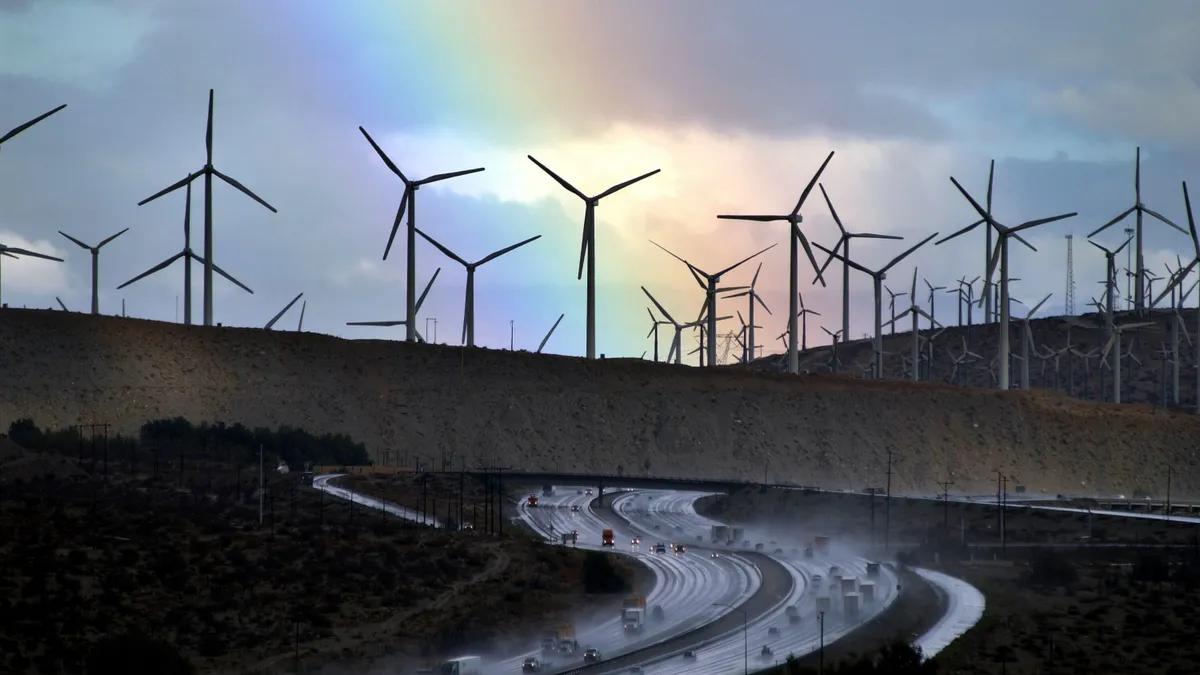The following is a contributed article by Michael Wara, director of the Climate and Energy Policy Program at the Woods Institute for Energy and Environment, Stanford University.
A wicked combination of climate change-fueled heat waves, drought and wildfires this summer shows once again that significant challenges to California's electricity reliability continue. Reports from across the state show how this combination of factors is stressing the California grid in new and unexpected ways. So-called "Flex alerts," in which California's grid operator asks us all for voluntary conservation, are beginning to seem routine.
The Governor recently acted to put emergency measures in place to avoid blackouts this summer. But California policymakers should act this year to make sure that new transmission connections that provide system resilience and access to diverse sources of renewable power are fully considered and built quickly — if it can be shown that they are cost-effective solutions.
Temperatures are driving up electricity demand as Californians turn up their air conditioners to keep cool; California's large hydro power plants are less available than in the past because of drought; and reliance on a limited set of connections between our state's 40 million people and the abundant renewable energy supplies located elsewhere in the West is proving risky because of wildfires — such as the Bootleg Fire, as of this writing, a 413,000 acre monster — that sometimes shut down these vital connections to our neighbors. This is made more challenging by our success in deploying solar power, which is available only when the sun shines.
After the August heatwave-caused blackout of 2020, the state agencies responsible for electricity planning took swift action to try to reduce risks of future interruptions. They made sure that huge batteries were deployed to store excess solar energy during the day for Californians to use at night. They instituted new programs to encourage, and even pay Californians to use less energy during times of grid stress. And they made tough choices to keep open a number of dirty power plants that regulators had hoped to shutter.
One solution just starting to be considered is construction of new transmission links to bolster system reliability and access out-of-state renewable resources. There are a number of concrete proposals on the table, some of which are shovel ready and will be analyzed this year by the California Independent System Operator. The Southwest Intertie Project - North ("SWIP-North"), which would link wind and hydro resources from Idaho, Wyoming and the Pacific Northwest to California's power grid via a lower-fire risk path than the one shut down by the Bootleg Fire last month, is one such line.
Building lines like SWIP-North doesn't mean creating a single electric power market in the West, with all of its complications and potential risks. California has long built out-of-state lines and even power plants when it saw benefit. And we have done so without becoming part of a regional power market. What lines like SWIP-North would do is strengthen our resilience to events like transmission-interrupting catastrophic wildfires and to climate change fueled heat waves, all while enabling connections to new renewable resources like Idaho wind power that produce electricity when the sun isn't shining in the Golden State, when we need it most.
California energy regulators made the right decision recently by indicating they will study this project and others as part of their policy planning process. This is a good step, though given recent experience, in addition to their economic and policy benefits, these projects' reliability benefits should also be valued as part of the analysis. Lines like these can play an important role in ensuring the state is protected from grid-related issues caused by extreme events. Regulators need to give these transmission lines equal attention to projects proposed within California. That means full evaluation in current planning processes that would allow for construction in 2023 and completion by the time that the Diablo Canyon nuclear plant retires.
We need to put all options on the table to keep the lights on for California while we break new ground in the energy transition. To do that, California's regulators need to consider the in-state solutions like batteries and demand response. They also need to fairly and fully evaluate building new and more robust connections to the abundant clean resources available to us across the Western grid. Our grid planners should take action now to allow these projects to fully compete in the next round of transmission projects our state constructs.














